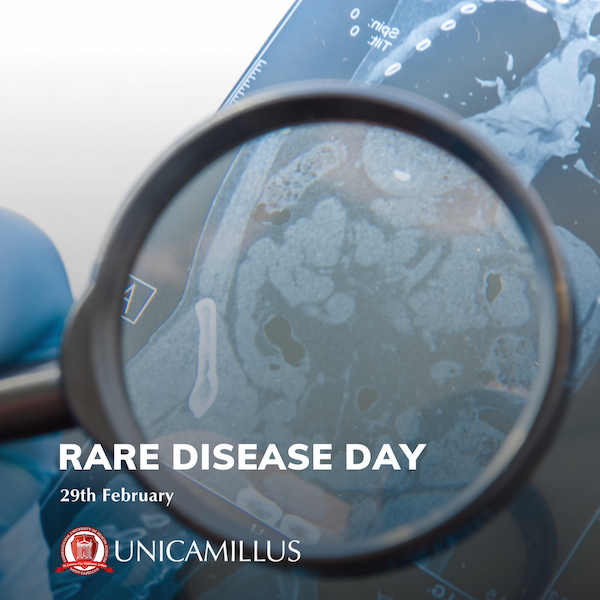As the name suggests, rare diseases are not common. However, this should not equate to a life sentence for those affected in terms of access to treatment and society’s perceptions of ‘normality’. Such a significant issue is one that UniCamillus University — steadfast in its support for the marginalised — seeks to underscore.
29th February marks the seventeenth Rare Disease Day, and the date couldn’t be more fitting as this day is the rarest day in the calendar, occurring only once every four years. In non-leap years, Rare Disease Day is celebrated on 28th February.
Initiated in 2008 by Eurordis — a non-profit alliance representing over 1,000 rare disease patient groups from 74 countries — the day is intended to raise awareness among the scientific, social, and political communities of individuals living with exceedingly rare diseases, which are often less known and more challenging to treat.
In Italy, Rare Disease Day is promoted by UNIAMO, the Italian Federation for Rare Diseases. This year’s campaign encourages the use of the hashtag #UNIAMOleforze.
What are rare diseases?
The definition of a rare disease varies globally. In Europe, a disease is classified as rare if it affects fewer than 50 individuals per 100,000.
While these diseases are rare in comparison to the global population, the figures are far from insignificant, especially considering the health implications. It’s estimated that approximately 300 million people worldwide are living with a rare disease, including between 2.1 and 3.5 million individuals in Italy.
Over 70% of these diseases have genetic origins, meaning they are caused by DNA anomalies. Genetic diseases can be inherited in various ways:
- Autosomal recessive: the individual must inherit a genetic defect from both parents, who are asymptomatic carriers. Examples include cystic fibrosis, ADA-SCID, spinal muscular atrophy, and metachromatic leukodystrophy. Each pair of carrier parents has a 25% chance of having a child with the disease.
- Autosomal dominant: inheriting the defect from just one affected parent is sufficient to exhibit symptoms. There are no asymptomatic carriers, and the disease typically manifests in adulthood. Examples include Huntington’s disease, dominant optic atrophy, and polycystic kidney disease.
- X-linked dominant inheritance: the genetic defect is on the X chromosome. Since females have two X chromosomes and males only one, these diseases predominantly affect males. Examples include Duchenne muscular dystrophy, Fabry disease, and haemophilia.
- Mitochondrial inheritance: the genetic defect is in the mitochondrial DNA and is only passed down from the mother.
Some rare genetic diseases are not inherited but occur spontaneously in the parents’ gametes. Examples include Rett syndrome, CDKL5 deficiency, and Dravet syndrome. Non-genetic rare diseases may have autoimmune, tumoral, or infectious origins.
Early diagnosis is crucial as it can significantly alter the disease’s trajectory. With 70% of these diseases beginning in childhood, neonatal screening is vital.
The crucial role of awareness
There are between 7,000 and 8,000 known rare diseases, yet only 5% have an established treatment. The average time to diagnosis is nearly five years.
Rare diseases are serious, often life-threatening conditions, underscoring the critical gap between the need for treatment and the limitations of a statistic deemed irrelevant.
Focusing on these diseases is crucial for several reasons. Firstly, due to the impact they have on the quality of life of affected individuals and their families, not just through health issues but also in terms of the limitations some disabilities can impose on daily activities.
Additionally, rare disease patients often face significant challenges in diagnosing their condition and obtaining therapeutic support and research, as medical efforts frequently concentrate on more prevalent diseases.
We must also consider the families of these patients, who often struggle to find social support in managing a challenging and exceedingly rare situation, both practically and emotionally.
This 29th February, our goal is to strengthen research, social, and political awareness in the hope that the inequalities in access to care that some still face will become increasingly rare until they are eradicated.

